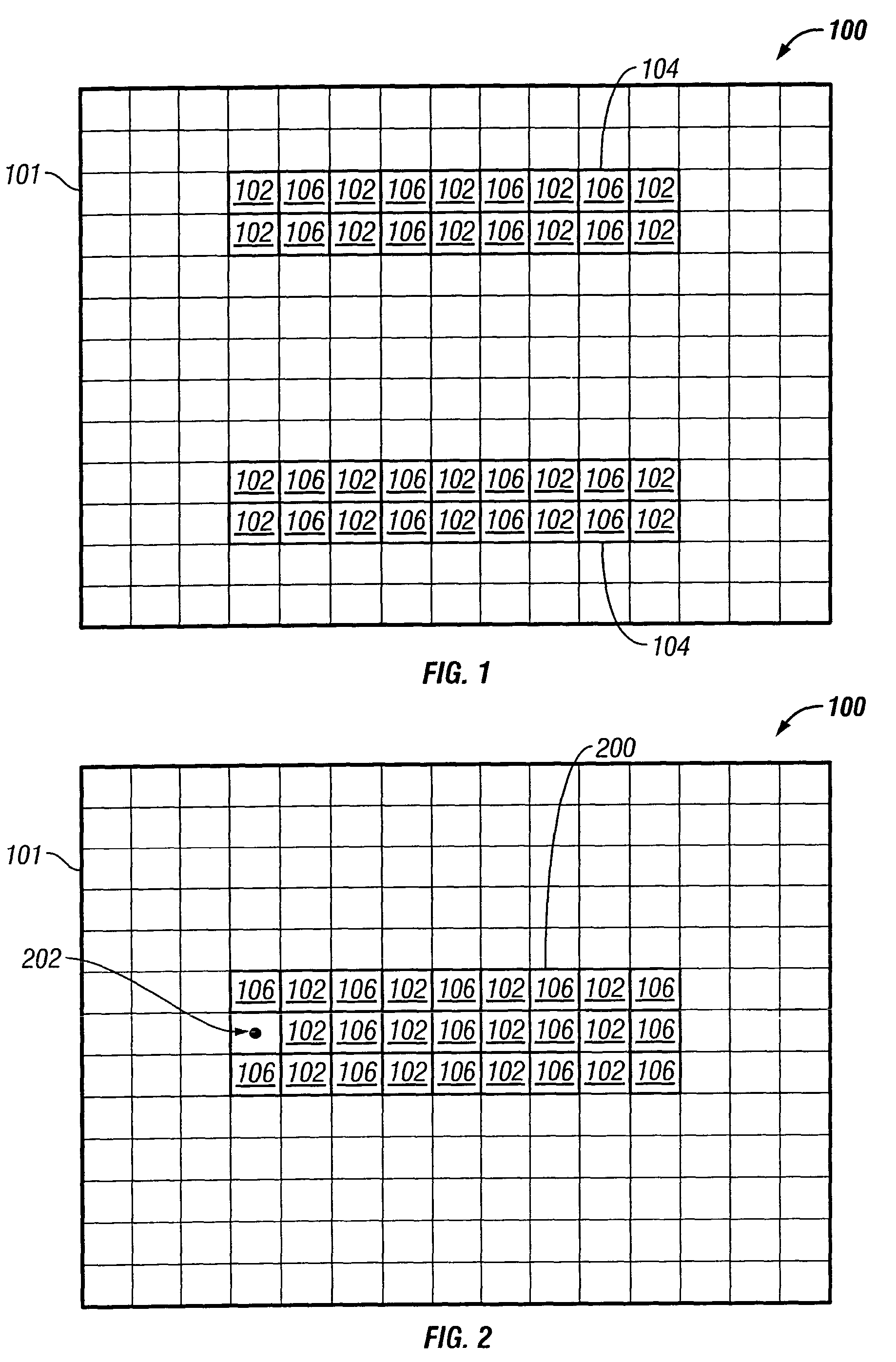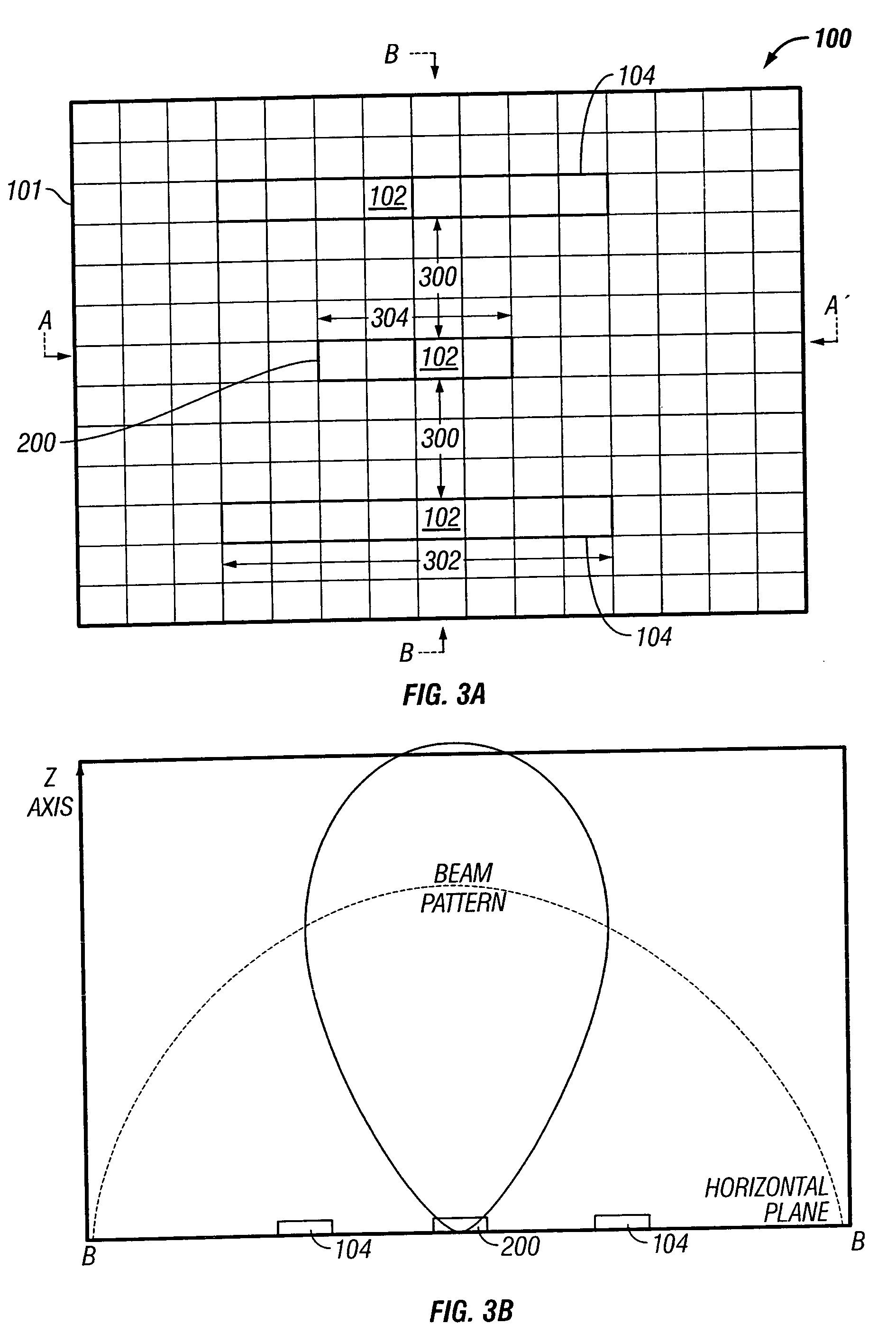MEMS planar antenna array
a planar antenna array and antenna technology, applied in the direction of antennas, antenna feed intermediates, antenna details, etc., can solve the problems of affecting the performance of each antenna, and difficulty in housing a corresponding plurality of microstrip antennas, etc., to achieve the effect of convenient manufactur
- Summary
- Abstract
- Description
- Claims
- Application Information
AI Technical Summary
Benefits of technology
Problems solved by technology
Method used
Image
Examples
Embodiment Construction
[0051] FIG. 1 is a plan view of the present invention microelectromechanical switch (MEMS) planar antenna array. The antenna array 100 comprising a planar field 101 of MEMSs 102. A lattice of parasitic elements can be formed by selectively connecting a MEMS 102 in the field 101. As shown, a lattice is formed with two parasitic elements 104. Each parasitic element 104 includes ten MEMS sections 102. Although a rectangular field 101 is shown, the present invention is not limited to any particular field shape. As explained in more detail below, the field 101 may be comprised of MEMS 102 exclusively, or a combination of MEMS 102 sections and non-switching (non-MEMS) conductive areas. In other aspects of the array 100, the field may include non-switching non-conductive areas in combination with MEMS 102, or further in combination with MEMS 102 and non-switching conductive areas.
[0052] In one aspects of the antenna array 100, the field can be comprised exclusively of connected MEMS sectio...
PUM
 Login to View More
Login to View More Abstract
Description
Claims
Application Information
 Login to View More
Login to View More - R&D
- Intellectual Property
- Life Sciences
- Materials
- Tech Scout
- Unparalleled Data Quality
- Higher Quality Content
- 60% Fewer Hallucinations
Browse by: Latest US Patents, China's latest patents, Technical Efficacy Thesaurus, Application Domain, Technology Topic, Popular Technical Reports.
© 2025 PatSnap. All rights reserved.Legal|Privacy policy|Modern Slavery Act Transparency Statement|Sitemap|About US| Contact US: help@patsnap.com



